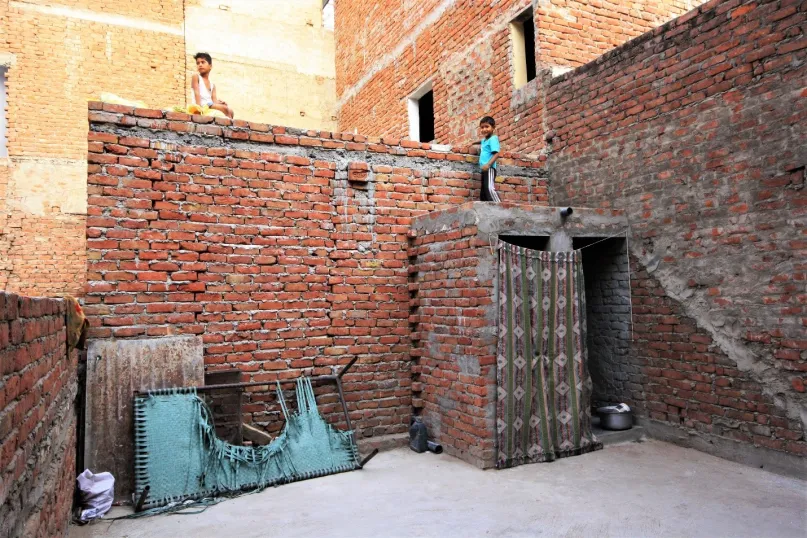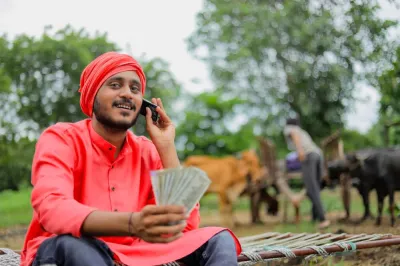Better Homes Support Public Health

Coronavirus has been referred to as a “housing disease.” Indeed, data has shown strong links between overcrowding, poor housing conditions and higher mortality rates. Conditions in informal settlements are dire as the disease spreads quickly when households live in cramped spaces without access to water and sanitation. Access to safe and secure housing is more important than ever!
Over the last decade, the increased provision of housing microfinance has resulted in safe and healthy housing conditions for millions, thereby improving families’ social and economic resilience. With its roots in traditional microfinance, the housing microfinance sector provides larger, lower-interest loans that align with low-income households’ incremental building practices.
However, the housing microfinance sector is not immune to the effects of COVID-19, as low-income borrowers around the world struggle to repay their loans and the microfinance sector discusses how to survive this threat. 90 percent of borrowers in India opted for the three-month payment moratorium starting in March, and with the moratorium extended another three months until the end of August, lenders do not expect to make a full recovery until the end of the year. Since the employment profile of borrowers is heavily skewed toward the informal sector, income recovery is expected to be uneven and slow, thereby affecting repayment capacity.
Although the pandemic has put the brakes on the sector’s growth in the short term, it is now more important than ever that we continue to build on the progress of the last decade and work to overcome the constraints and limitations to expansion. While repayment moratoriums and emergency liquidity funding are much needed to address the immediate fallout from the pandemic, this is also an opportunity to build a housing microfinance sector that is integrated with other areas of social and economic impact such as health, education and livelihoods.
What can we do to expand access to housing microfinance in a post-COVID-19 world, and therefore improve health and resilience outcomes not only for families but also our communities and cities?
- Integrate housing microfinance into urban programs. The homes we build today shape our neighborhoods and cities for decades to come. To ensure that housing microfinance not only enables housing access at the household level but also engenders sustainability and resilience at the community and city level, it is important that lenders collaborate with other urban development stakeholders (for instance, those in the fields of infrastructure, health and education).
- Develop complementary non-financial products that focus on long-term resilience. Housing is the single biggest investment that families make in their lifetimes, often passed on over generations. In addition to having access to appropriate financial products, access to technical support – including design and planning, budgetary preparation and construction oversight – is important to ensure that the homes being built are structurally sound, environmentally sustainable and disaster resilient. Ongoing efforts toward developing such holistic approaches are commendable and essential as the urgency to build green and durable housing is ever-increasing.
- Leverage new technologies to reduce costs and risks. Though the housing microfinance sector has long been criticized for high costs, new technologies are starting to break the trend. Machine learning has been deployed by the World Bank to rapidly identify buildings at risk, while new retrofit technologies such as PP bands - an affordable building technology which can make homes safer - are being applied to reduce risks and costs. Apps help reduce transaction costs and enable banks to monitor works from afar – a critically important advancement in a time of social distancing. Other breakthroughs have focused on water and energy provision. The sector is far from static and resilient measures to improve housing quality are becoming more accessible to lower-income households. The sector must continue to innovate and promote technologies that make homes safer and healthier at affordable costs.
For the moment, it is natural – and necessary – that lenders prioritize addressing the immediate consequences of the pandemic, including maintaining liquidity, portfolio quality, and customer confidence. But as countries begin to emerge from lockdown, lenders, regulators and investors should band together and take a coordinated set of actions, such as those described above, to set the stage for sustained growth in the medium- and long-term. Though the housing microfinance sector may be struggling today, it provides a path towards recovery as construction creates jobs and better homes support public health.



Thanks for this educative write up.
Housing is a challenge that need partnership to resolve when it comes to low income earners.
My question is there any organization in Africa can our converative society in Nigeria can affiliate to for low cost housing project for our members?
Kindly notify me please.
Ogwunte Thomas Erasmus
Crown Multi-purpose Cooperative Society- Uyo, Akwa Ibom State Nigeria, West Africa.
erasmuscrown22@gmail.com, 08064814338.
Leverage new technologies to reduce costs and risks. - We have implemented moladi in our projects Not only in housing construction but also in school projects - Speed reduces cost www.moladi.net
Leave a comment